TWO GOOD FLAVORS IN ONE
Friend or Foe?
Is it a weed or is it a garden plant? Garlic chives (Allium tuberosum) is among those plants — paulownia tree, Jerusalem artichoke, mint, and anise hyssop are others — that has paraded under either guise.
Garlic chives comes from a good enough family, the onion family. There is one definitely weedy member to this family, wild garlic, but so many of its other kin are valuable garden plants. Star-of-Persia,
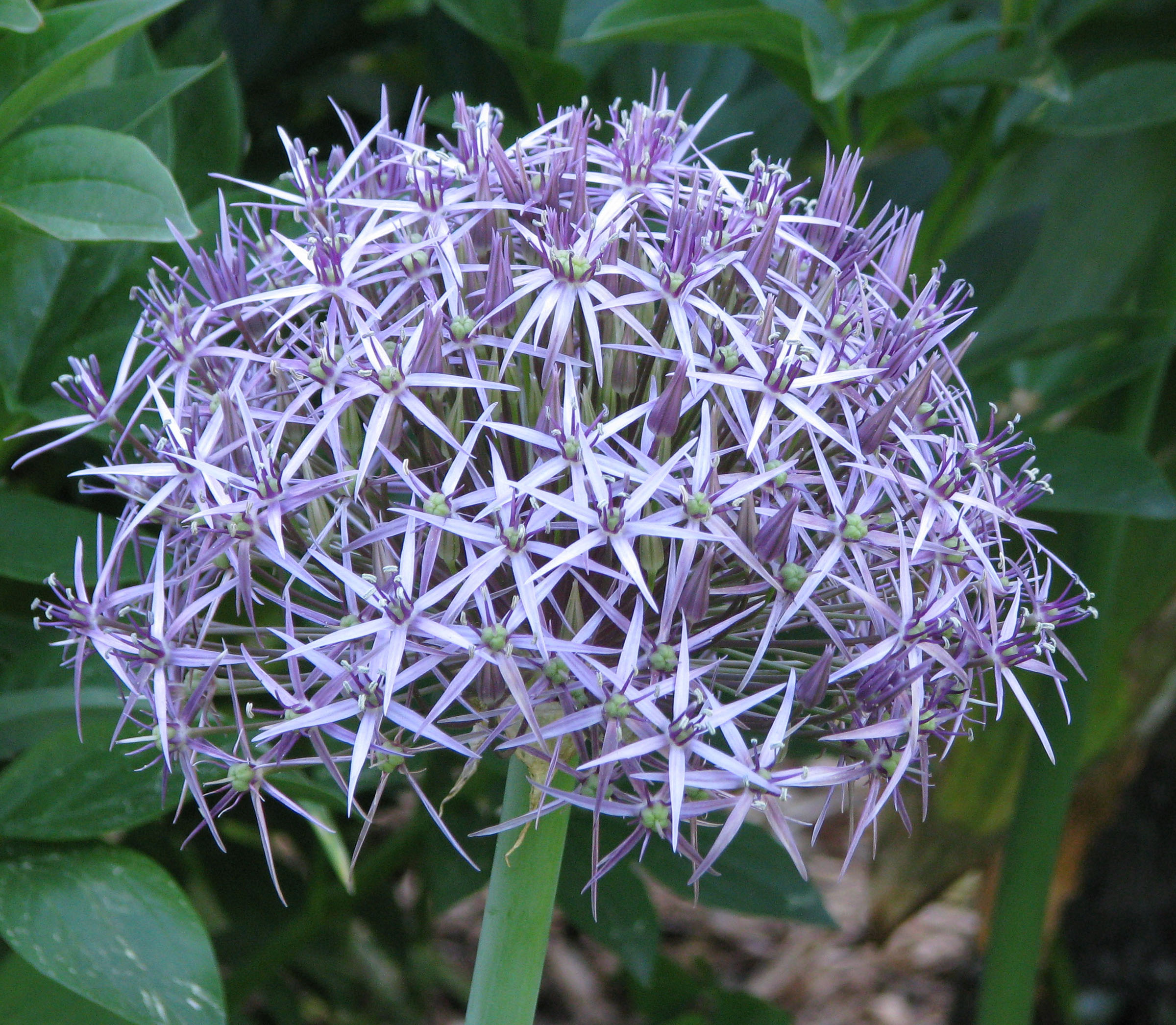
giant onion,
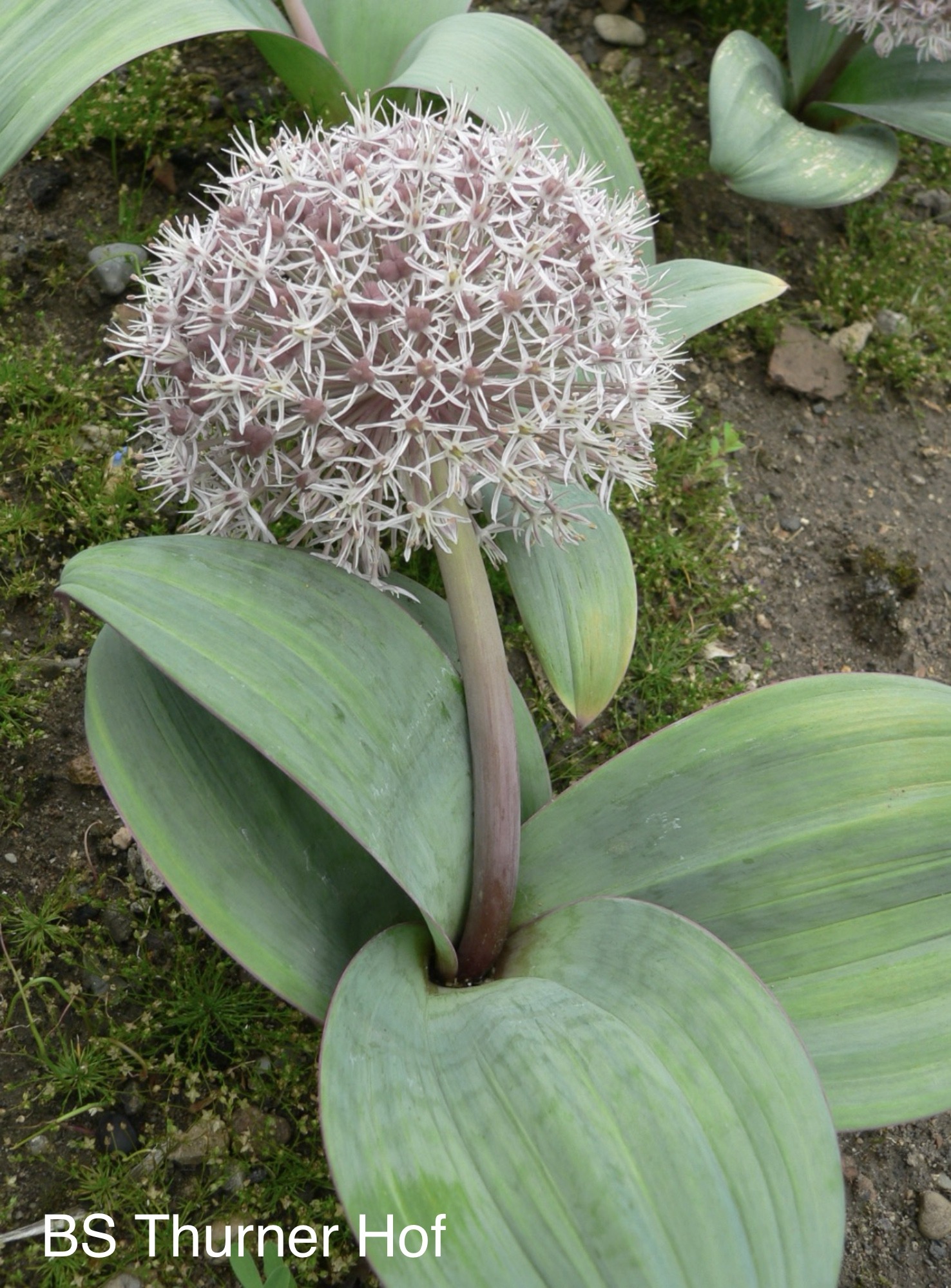
and lily leek are among those that light up flower gardens with starbursts of blossoms. And the wide, purple mottled leaves of Turkestan onion add as much to a flower garden as do the flowers themselves, clustered together like fuzzy tennis balls above the leaves.
Onions of many kinds, leeks, shallots, garlic, ramps,
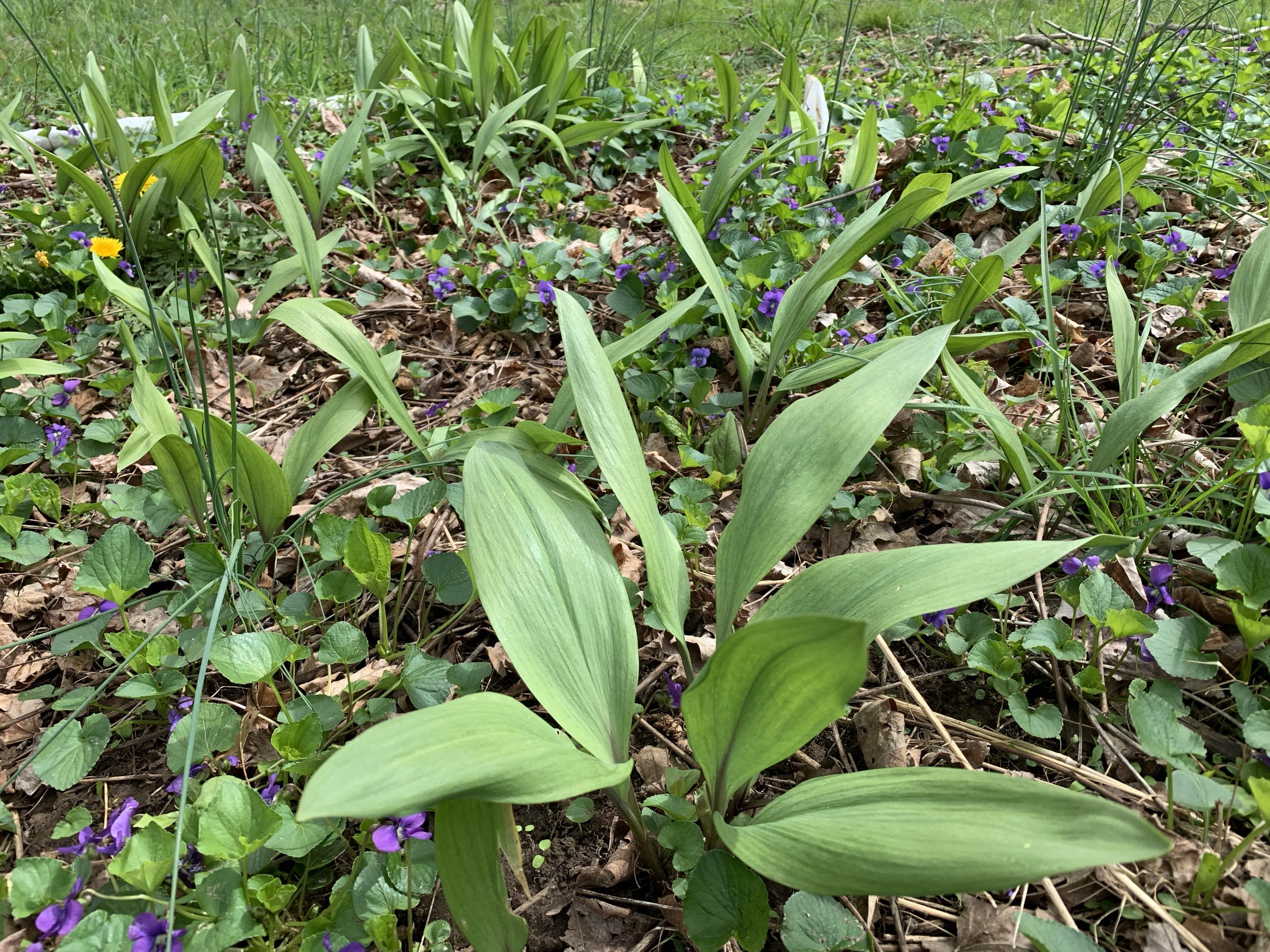
Ramps here at the farmden
and chives all provide delectable fare in the kitchen. Garlic and chives, of course, pretty much describes the kitchen use of garlic chives.
In China, garlic chives leaves that are blanched from sunlight for a couple of weeks before harvest beneath an overturned flowerpot are a delicacy over fried noodles. They’re also tasty fermented by themselves or fermented along with bok choy and other vegetables in kim chi.
Garlic chives like its kin, is widely adapted, growing well from where temperatures drop to well below zero degrees F. to where they hardly get to freezing.
A Looker, a Little Scary
Besides good enough flavor, there’s no question as to garlic chives’ beauty. The thin leaves rise from the ground in clumps just like those of chives, except that garlic chives’ leaves are flattened and folded rather than round and hollow. And rather than being topped by fuzzy, pink heads like chives, garlic chives’ flower stalks are capped by small, star-shaped, white flowers clustered together to create a larger star. The flowering stalks are also decorative dried.
Those flowers are followed by seeds, and with those seeds an ominous cloud begins to pass over this plant. Garlic chives unabashedly spreads its seeds everywhere.
No problem, you may remark: cilantro and dill also are prolific self-seeders. Yes, they are. I continue to grow these two herbs, merely yanking out of the ground excess or errant seedlings of each. A quick tug removes any problem plant, roots and all.
Give garlic chives a similar yank, though, and the strappy leaves either slip through your fingers or else snap off. The thick roots — which also spread, but nothing like garlic chives seedlings — remain in the ground to merely resprout.
My Experience
I planted garlic chives a number of years ago, but became uneasy when it started to spread around the garden willy nilly. Visions of my garden given over to this plant prompted me to weed out every last trace of it.
The plant just as promptly showed up a hundred feet from the original planting — on the other side of my home! At this site, though, against a rock wall and beneath some dense shrubs, spread of garlic chives is kept in check. A sweep of garlic chives would anyway look pretty there. 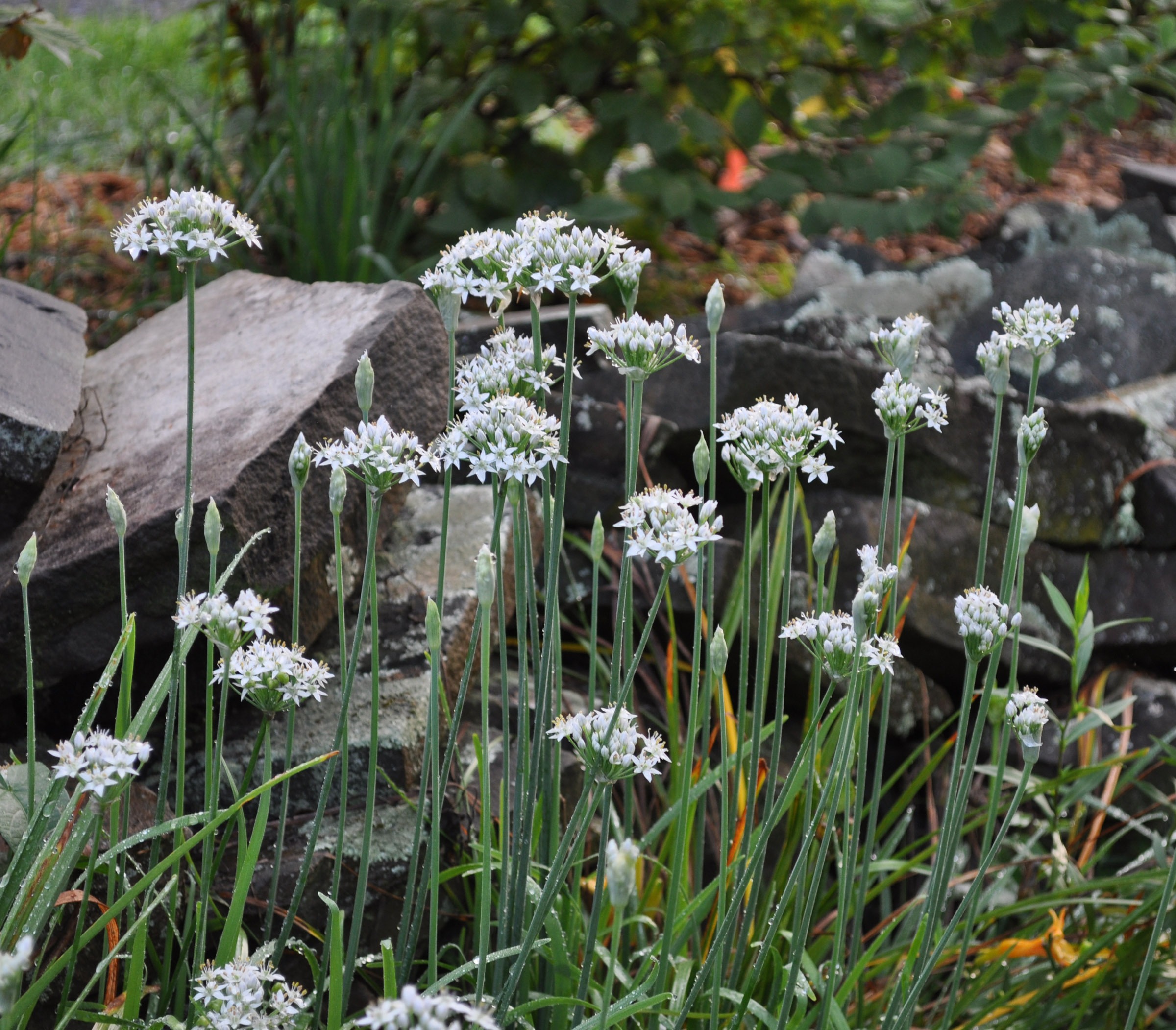 Offspring of this planting, oddly enough, have never migrated back to their original site.
Offspring of this planting, oddly enough, have never migrated back to their original site.
If you are bold enough to grow garlic chives, promise to rigorously cut back spent flowers before they mature seeds if you want to contain growth. Beyond that, garlic chives is an easy and pretty plant to grow for the flower garden, the vegetable garden, or the herb garden. Like other members of the onion family, garlic chives thrives best in full sun and moderately rich soil.
One way to start a planting of garlic chives is to beg a division from a friend or neighbor’s clump. Dig up a section, replant it, and keep it moist until established.
Seed is another way to begin a planting. As you might guess, the seeds sprout readily — in about a week.


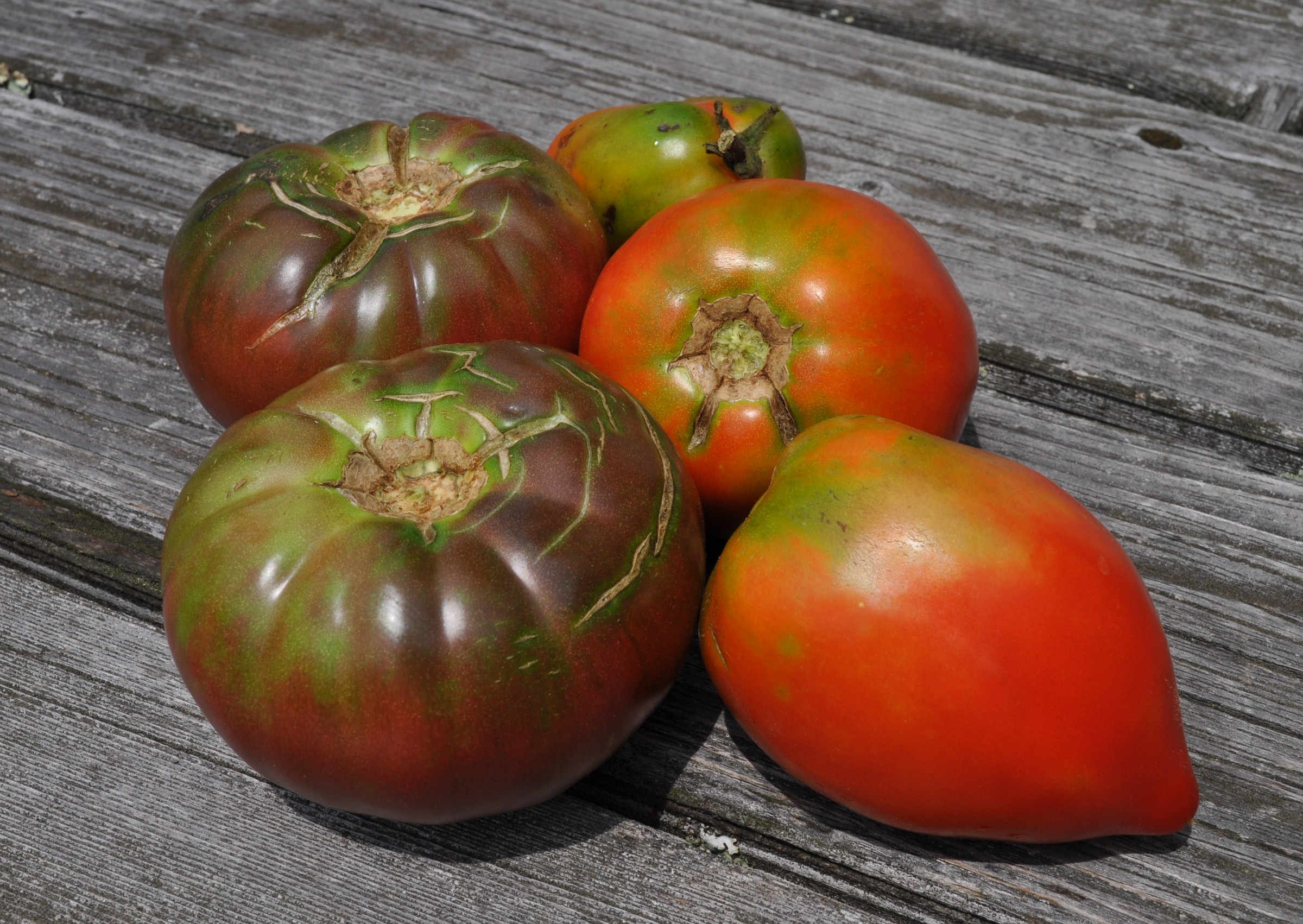
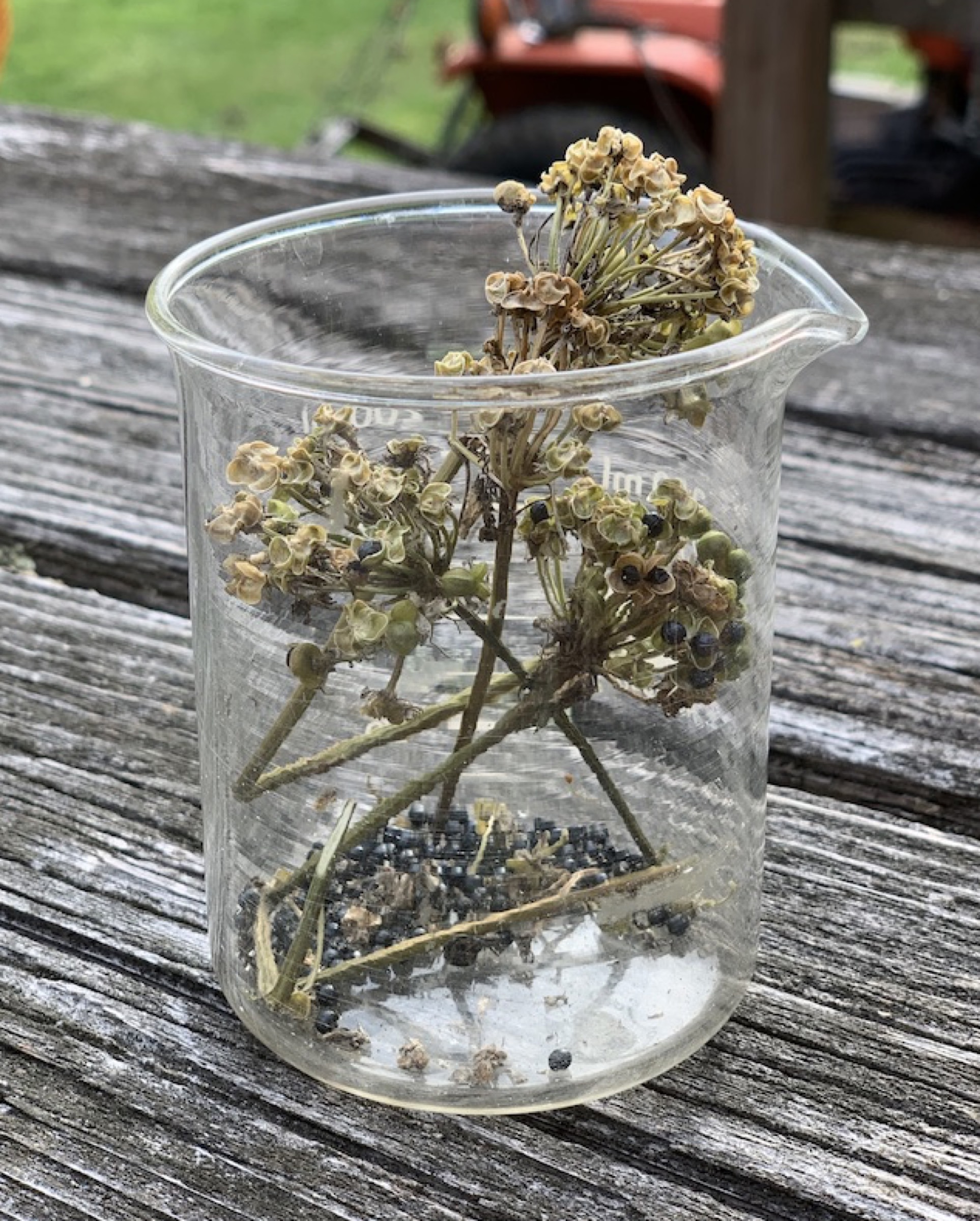
This plant showed up last year in a gravel bed containing sedum and lamium. I was not aware what it until I read this post, but knew it was a type of onion. I have not seen it growing anywhere in my neighborhood or anywhere else here for that matter. Other than becoming a larger clump it has not seeded around, but now that I have read this I will remove seed heads after flowering! It is a charming plant and bees enjoy it. Wolf in sheep’s clothing!
As I wrote, the clump that self-seeded hasn’t really hardly spread at all. I don’t know why. The soil is less rich at its present location, and it only gets sun maybe three hours or so around midday. My original clump that self seeded got pretty much full sun.
Very interesting! Lovely flowers — and thanks for the heads up. I wish someone would have shared information with me about asian lillies years ago when I brought one little plant home from the nursery. :0